- Home
- F. Scott Fitzgerald
The Fantasy and Mystery Stories of F Scott Fitzgerald
The Fantasy and Mystery Stories of F Scott Fitzgerald Read online
The Fantasy and Mystery Stories of F. Scott Fitzgerald
Selected and Introduced by
PETER HAINING
For
BILL LOFTS
Friend and Critic
‘Draw your chair up close to the edge of the precipice and I’ll tell you a story…’
F. Scott Fitzgerald
Notebook, c. 1938
Contents
Title Page
Dedication
Epigraph
Introduction
The Mystery of the Raymond Mortgage
The Ordeal
Tarquin of Cheapside
The Offshore Pirate
His Russet Witch
The Curious Case of Benjamin Button
Rags Martin-Jones and the Pr–nce of W–les
The Adjuster
The Dance
A Short Trip Home
Outside the Cabinet-maker’s
One Trip Abroad
The Fiend
Shaggy’s Morning
Copyright
Introduction
In 1918, not long past his twenty-first birthday, F. Scott Fitzgerald wrote a rather idiosyncratic list of the things he was interested in: ‘The influence of night, rather bad women, personality, fanaticism, very good women and the supernatural.’ Though, at the time, he still had to get his first novel published – indeed, his initial attempt entitled The Romantic Egotist had already been turned down by a New York publisher – in those few words he summarized virtually all the themes which in the years that followed were to make him one of the most famous figures of twentieth-century literature.
But while Fitzgerald’s classic novels, such as This Side of Paradise, The Beautiful and the Damned and The Great Gatsby, all of which typify the ‘Jazz Age’, are as familiar to modern readers as the basic facts of his legendary life style, his fascination with the supernatural – embodying as it does both fantasy and mystery – may come as something of a surprise. Yet the fact remains that he was a writer who was drawn to the subject in his childhood and never abandoned it during his rumbustious life which alternated from drunken playboy to writer of the highest literary talent.
Probably only one of Fitzgerald’s fantasy stories is well-known, the novella ‘The Diamond as Big as The Ritz’ written in 1922, and subsequently used as the title story of a collection of his more typical stories of the lives and loves of America’s gilded young men and women of the twenties. But in actual fact this ‘wild sort of extravaganza’ as Fitzgerald himself called it, was far from his first venture into the realms of fantasia – and its influence was not to stop there, as Malcolm Cowley declared in an introduction to a 1963 collection containing the story:
Written in the winter of 1921–22, ‘The Diamond as Big as The Ritz’ states a theme that would often recur in his work. A middle-class boy falls in love with the heiress to a great fortune and she returns his love, but the boy is murdered by her family or destroyed by her wealth. ‘The Diamond’ can have a happy ending – at least for the lovers – because it is a fantasy; but the fable would reappear in The Great Gatsby and there it would be carried to its tragic conclusion. Having fallen in love with the rich Mrs Buchanan, Gatsby would be murdered as efficiently as were the visitors to Braddock Washington’s diamond mountain.
Paul Rosenfeld in his Men Seen: Twenty-Four Modern Authors (1925) has spotted a further significance in the tale that it could well be a satire. ‘Mr Braddock Washington,’ he wrote, ‘the richest and most profoundly unsympathetic man in the world, looks dangerously like a jazz age portrait of the father of the country.’
Because it is so readily accessible, ‘The Diamond as Big as The Ritz’ is not included in these pages – but the earlier fantasy and mystery tales written during Fitzgerald’s formative years as well as those of his maturity and decline most certainly are, both as memorial to the man on the fiftieth anniversary of his death, as well as to ensure him a place among the outstanding writers in this genre of fiction, among whom he has so far signally failed to be placed.
The origins of what Robert Sklar in his study F. Scott Fitzgerald: The Last Laocoön (1967) has called the writer’s ‘feeling for the supernatural’ can be traced to his youth, and even before that in the influence of his forebears.
Francis Scott Key Fitzgerald the only son of Edward and Mollie Fitzgerald was born on 24 September 1896 in St Paul, Minnesota. On his mother’s side, Scott’s grandfather had been an Irish immigrant who, by all accounts, was possessed of that instinctive love of folklore and superstition that is the inheritence of all Gaelic men and women; while on his father’s side there was an actual skeleton in the cupboard: an aunt, Mrs Suratt, had apparently been hanged for complicity in the murder of President Lincoln!
Scott’s father, Edward Fitzgerald, had been raised on a farm in Maryland and was a quiet, rather diffident man who for a time ran a small furniture business until it failed, and then became a salesman for Proctor and Gamble. Mollie Fitzgerald, however, was quite the opposite: an eccentric lady by nature, outspoken in her views, careless in her appearance, and an omnivorous reader. Friends of Scott Fitzgerald later recalled her as ‘a witch-like old lady’ who always seemed to be going to or from the local library with an armful of books under her arm. Perhaps not surprisingly, her son’s attitude towards her alternated between embarrassment and devotion.
Both parents spoiled their precocious and imaginative son – a situation which may partly be explained by the fact that they had lost two of their older children, both girls. From an early age, too, the couple encouraged in him an interest in reading, though while his father favoured literature, his mother had a taste for what Scott later referred to as ‘bad books’, meaning the lurid, yellow-back fiction of the time.
Like most children, the first books which were read to him were fairy-tales – and the impression they had on him was to remain vivid throughout his life. Indeed, in one of his notebooks written years later can be found an observation inspired by such tales, as well as the evidence that he had something of a sweet tooth.
‘In children’s books forests are sometimes made out of all-day suckers,’ he wrote, ‘boulders out of peppermints and rivers out of gently flowing, rippling molasses taffy. Such books are less fantastic than they sound, for such localities exist, and one day a girl, herself little more than a child, sat dejected in the middle of one. It was all hers, she owned it, she owned Candy Town.’
Fitzgerald soon graduated from nursery tales to the adventure stories of Sir Walter Scott and G. A. Henty, by way of a thrilling series of paperback novels with the collective title, Raiding With Morgan, which were supplied by his mother. His father read him the poems of Edgar Allan Poe and Lord Byron’s ‘Prisoner of Chillon’ – and ‘their mystery echoed in his soul’ according to one of his biographers, Andrew Turnbull, who adds that on a trip to Niagara the boy heard ‘enchanting voices in the dusk.’
These ghostly voices were to echo through his work when the urge to become a writer consumed him.
A short while later, Fitzgerald senior introduced his pubescent son to the stories of Sherlock Holmes – and by so doing seemingly gave him the inspiration to write his first story, a tale of mystery, scribbled out in an exercise-book in 1908. Years later in 1934, in a letter to a friend, E.S. Oliver in Baltimore, Fitzgerald confessed:
The first help I ever had in writing in my life was from my father who read an utterly imitative Sherlock Holmes story of mine and pretended to like it.
Though no trace of this composition has survived, it is significant that Fitzgerald’s first literary attempt should have been a
story of this kind. The plot, apparently, concerned a necklace that had been hidden in a trap-door under a carpet, and described its recovery by the great sleuth of Baker Street. Imitative though the tale may have been – in its author’s judgement – it sparked his desire to be a writer: and within a year another story, also a mystery, became his first published work.
The new story was called ‘The Mystery of the Raymond Mortgage’ and it was published in the October 1909 issue of his school journal, The St Paul Academy Magazine. In introducing the story to its readers, a note about the author declared, ‘young Scottie is always bubbling over with suppressed knowledge and has excelled in his English classes’. It didn’t mention that he devoted himself to this study to the exclusion of many of his other lessons, and that several of the teachers had actually caught him writing stories behind the shield of mathematics and Greek textbooks!
According to Andre Le Vot in his biography F. Scott Fitzgerald (1984), the youngster’s story for the Academy magazine ‘reflected his taste for the mystery stories he devoured then.’ Curiously, in the otherwise reliable Encyclopedia of Mystery and Detection (1976), the authors, Chris Steinbrunner and Otto Penzler, describe the story as ‘flawed in plot’ and declare that his contribution to the mystery genre was ‘negligible’. Another biographer, Arthur Mizener in The Far Side of Paradise (1951) is more accurate – as well as generous – in his assessment of this literary début.
‘Having become an expert on the detective story on his own initiative,’ says Mizener, ‘he wrote “The Mystery of the Raymond Mortgage”. It is, for a schoolboy, a skilfully plotted little murder story and, in its sedulous imitation of the style of such works, often unconsciously very funny.’
Though we have no record of how Fitzgerald’s contemporaries reacted to his fiction, he was encouraged enough at seeing his work in print to produce three more tales for the magazine: two romantic stories set during the Civil War, ‘A Debt of Honour’ and ‘The Room with the Green Blinds’; plus an all-action tale of schoolboy football, American-style entitled ‘Reade, Substitute Right Half’.
It was when Fitzgerald entered Princeton University in September 1913 as a seventeen-year-old that he began to write in earnest. Coincidental with this, he came under the influence of two men who furthered his interest in mystery and the supernatural. The first was Father Sigourney Webster Fay, an Episcopalian who had been converted to Catholicism; and the second, a young Irish author and critic, Shane Leslie, a friend of Father Fay.
Aside from being a priest, Father Fay was a man of erudition and learning, and he was to have a profound effect upon young Scott until his sudden death in a flu epidemic in 1919. Leslie, also a Catholic, was then visiting America, and with Fay introduced the Princeton freshman to the apparently disparate traditions of Catholic intellectualism and ghost-stories. Leslie had himself discovered these traditions while studying at Eton where the Provost was the famed ghost-story writer, M.R. James. At Eton, too, he had come across the supernatural works of Robert Hugh Benson and the imaginative tales of H.G. Wells – both of which he promoted at Princeton in general and to Fitzgerald in particular.
Some years later, in 1935, Shane Leslie published his own Ghost Book into which he poured ‘the drift and silt of a life-long interest in ghosts.’ And in introducing the collection, he insisted that it was possible to believe in both religion and ghosts for, ‘it is not impossible or uncomfortable to study psychical research while occupying a static view of revealed Faith’, he wrote.
Such a belief intrigued and excited the young Fitzgerald, and when Father Fay described a ghost that he had himself seen, Scott’s conviction about the supernatural was shaped for life. With the passing months, Fay and Leslie came to nurse high ambitions for their pupil as they read examples of his work – a fact which Shane Leslie confirmed years later in a letter to the Times Literary Supplement of 6 November 1959. He wrote,
Monsignor Fay and perhaps myself induced Fitzgerald to believe he was the future Catholic novelist for the United States, a parallel to Hugh Benson in this country.
The first influence of these two men on Fitzgerald’s work is to be seen in a short story that he wrote in 1915 entitled ‘The Ordeal’. It is concerned with the temptations faced by a young novice about to take his monastic vows – and, apart from its elements of supernaturalism, which earn it a place in this collection, is also of note because of Fitzgerald’s statement at this time that he was ‘nearly sure that I will become a priest.’
‘The Ordeal’ was published in the University journal, the Nassau Literary Magazine, in June 1915, and the strange elements which emerge during this account of the clash between spiritual good and earthly evil have been described by Andrew Turnbull as ‘powerfully dramatised’. It is perhaps only because the author chose to incorporate part of the story into another tale, ‘Benediction’ which was published by Smart Set in February 1920, that the story is today little known, although it is possible that Fitzgerald may have nursed misgivings about it because, as he said in a later letter to Shane Leslie, ‘it has come in for the most terrible lashing from the American Catholic intelligentsia.’
Today’s reader must judge for himself.
After Fitzgerald left Princeton, joining the regular army in November 1917, he still kept in touch with his two mentors. He corresponded regularly, enthusiastically reporting on his work in progress – in particular, his first novel which he planned to call The Romantic Egotist. In February 1918, for instance, he wrote to Shane Leslie from Fort Leavenworth, Kansas enclosing a section of the manuscript.
‘“The Devil” is a chapter you can read without knowing the story’, he said. ‘What do you think of it?’
Leslie responded enthusiastically about the episode, in which the central character, Amory, has a nightmarish encounter with a mysterious, club-footed figure and is then haunted by footsteps in the street which seem to be leading rather than following him. The Irish writer promised to recommend the finished book to his own American publisher, Charles Scribner in New York.
Encouraged by these comments, Scott completed the book and in May 1918 dispatched it to Scribner’s. At the same time he dropped a line to Shane Leslie with an appropriate aside, ‘Well, may Saint Robert Hugh Benson appear to Scribner in a dream!’
Although there was to be no supernatural intervention on Fitzgerald’s behalf, for The Romantic Egotist was rejected by Scribner’s, it was returned with the suggestion that extensive rewriting might well make it publishable. Scott set about doing this with a will – and in September 1919, This Side of Paradise, as the work had now been retitled, was accepted. The young man from Minnesota was about to become a published novelist as well as a short-story writer.
One further curious tale remains to be recorded about this period of Scott Fitzgerald’s life, and it concerns the death of Father Fay. For Fitzgerald was convinced he had a premonition of the Monsignor’s passing.
By the beginning of 1919 Scott had met and fallen in love with the beautiful Zelda Sayre, and on the night of 10 January, as they sat together on a couch in the Sayres’ living-room, ‘we were seized by uncontrollable fear,’ Zelda confessed later in a letter to H.D. Piper. ‘The following day we learned of Father Fay’s death …’
It was probably no surprise to those who knew of Fitzgerald’s admiration for the father that he decided to dedicate This Side of Paradise, ‘To Sigourney Fay’.
There is also another story which Fitzgerald wrote during his time at Princeton for the Nassau Literary Magazine which can be categorized as fantasy. It is ‘Tarquin of Cheapside’, published in the magazine in April 1917, and it has the distinction of being the first of his tales to be reviewed. This fact has come to light from a letter Fitzgerald wrote to Maxwell Perkins, his editor at Scribner’s, in August 1922:
‘Tarquin of Cheapside’ first appeared in the Nassau Literary Magazine, and Katherine Fullerton Gerould reviewing the issue for the Daily Princetonian gave it high praise, called it ‘beautifully written’ and
tickled me with the first public praise my writing has ever had. When H.L.Mencken reprinted it in the Smart Set (in February 1921), it drew letters of praise from George O’Neill, the poet, and Zoe Atkins. Structurally, it is almost perfect and next to ‘The Offshore Pirate’ I like it better than any story I have ever written.
Maxwell Perkins, however, did not share Fitzgerald’s estimation of the tale, and asked him to exclude it from his short story collection, Tales of the Jazz Age, when this was to be published in September 1922. Perkins explained to his author, ‘The crime is a repugnant one for it involves violence, generally requires unconsciousness, and is associated with negroes.’
But Scott, supported by Zelda, upon whose verdicts concerning his work he placed great store, stood by ‘Tarquin of Cheapside’, and it duly appeared in the book – where once again it caught the eye of critics and readers alike.
‘The Offshore Pirate’ to which Fitzgerald compared ‘Tarquin of Cheapside’ was a story that he had written just prior to his marriage to Zelda in April 1920, and again it is a tale with an interesting background that merits a place in this book.
It was early in 1920 while Scott was correcting the galley proofs for This Side of Paradise that he had the idea for ‘The Offshore Pirate’. It is a mystery-story of a beautiful and wilful young girl, Ardita Farnam, who is cruising off the Florida coast with her wealthy uncle when their yacht is boarded by a group of criminals who have committed some terrible crime and are making their getaway by sea. These desperadoes are led by the dashing Curtis Carlyle, an ambitious poor boy who has turned to crime in his quest for wealth and the love of upper-class girls.
It was a story that flowed from Scott’s pen, and the finished item delighted him. When, later, his early short stories were being assessed by the critics and ‘The Diamond as Big as The Ritz’ was specifically singled-out, Fitzgerald declared, ‘One critic has been pleased to like this extravaganza better than anything I have written. Personally, I prefer “The Offshore Pirate”.’

 This Side of Paradise
This Side of Paradise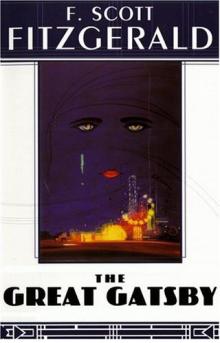 The Great Gatsby
The Great Gatsby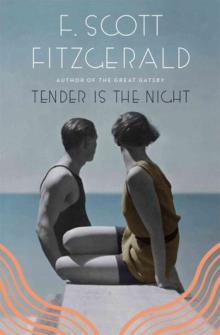 Tender Is the Night
Tender Is the Night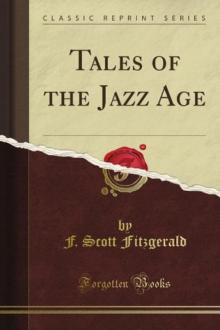 Tales of the Jazz Age (Classic Reprint)
Tales of the Jazz Age (Classic Reprint)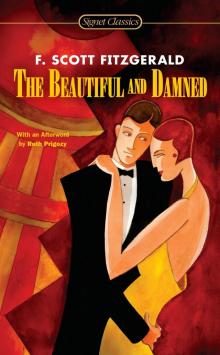 The Beautiful and Damned
The Beautiful and Damned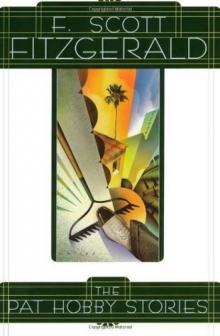 The Pat Hobby Stories
The Pat Hobby Stories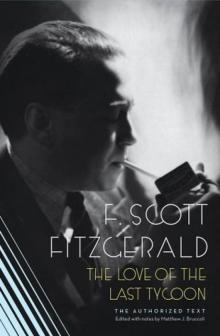 The Love of the Last Tycoon
The Love of the Last Tycoon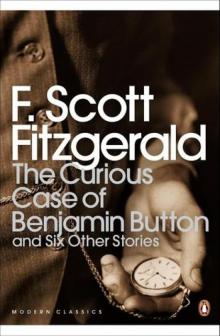 The Curious Case of Benjamin Button and Six Other Stories
The Curious Case of Benjamin Button and Six Other Stories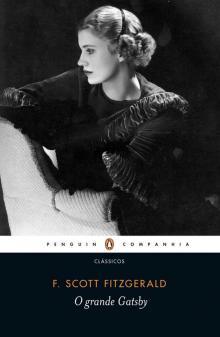 O Grande Gatsby (Penguin)
O Grande Gatsby (Penguin)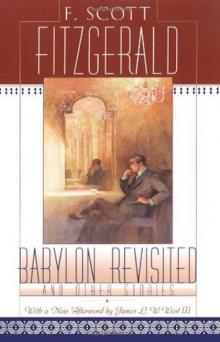 Babylon Revisited and Other Stories
Babylon Revisited and Other Stories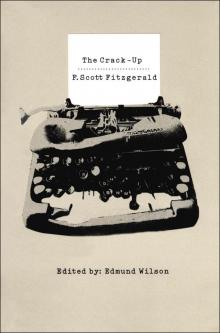 The Crack-Up
The Crack-Up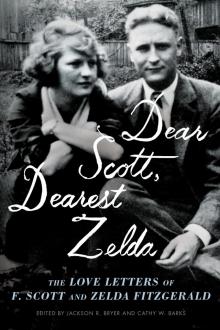 Dear Scott, Dearest Zelda
Dear Scott, Dearest Zelda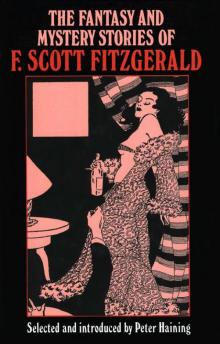 The Fantasy and Mystery Stories of F Scott Fitzgerald
The Fantasy and Mystery Stories of F Scott Fitzgerald Flappers and Philosophers
Flappers and Philosophers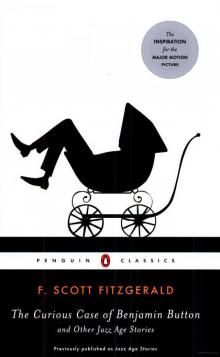 The Curious Case of Benjamin Button and Other Jazz Age Stories (Penguin Classics)
The Curious Case of Benjamin Button and Other Jazz Age Stories (Penguin Classics) I'd Die For You
I'd Die For You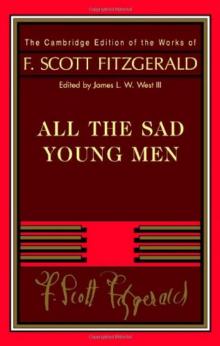 All the Sad Young Men
All the Sad Young Men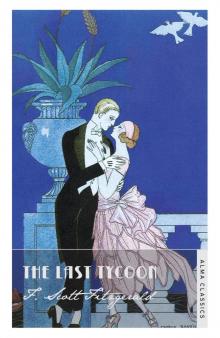 The Last Tycoon
The Last Tycoon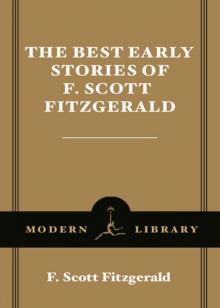 The Best Early Stories of F. Scott Fitzgerald
The Best Early Stories of F. Scott Fitzgerald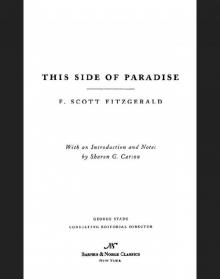 This Side of Paradise (Barnes & Noble Classics Series)
This Side of Paradise (Barnes & Noble Classics Series) A Life in Letters
A Life in Letters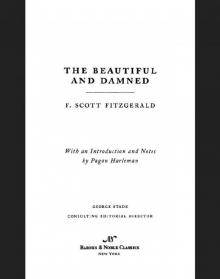 Beautiful and Damned (Barnes & Noble Classics Series)
Beautiful and Damned (Barnes & Noble Classics Series)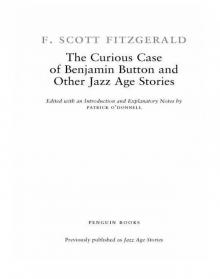 The Curious Case of Benjamin Button and Other Jazz Age Stories
The Curious Case of Benjamin Button and Other Jazz Age Stories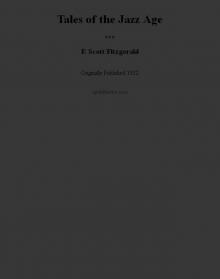 Tales of the Jazz Age
Tales of the Jazz Age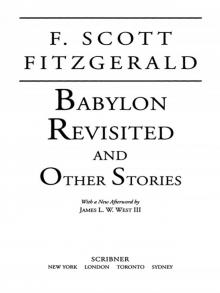 Babylon Revisited
Babylon Revisited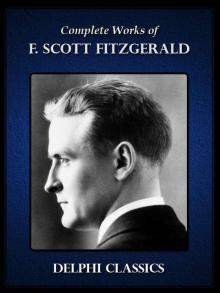 Complete Works of F. Scott Fitzgerald UK (Illustrated)
Complete Works of F. Scott Fitzgerald UK (Illustrated)